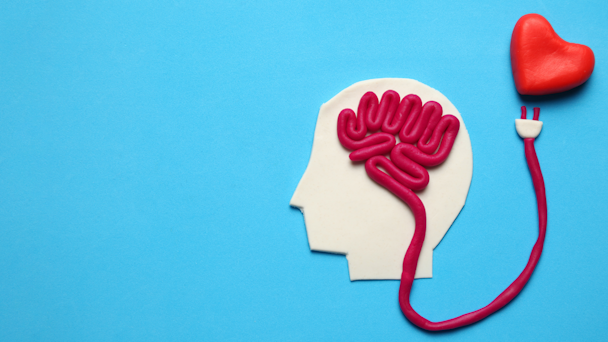Valentine’s Day ads can negatively impact mental health, particularly among men
Valentine’s Day ads tend to tell a very particular story: that men are obliged to spend exorbitant amounts of money on romantic gifts, otherwise their partners will think less of them. Here’s what experts have to say about the cultural narrative surrounding Valentine’s Day, and how it can affect the mental health of some men.

Some experts say that Valentine's Day ads can negatively impact the mental health of some men
Ostensibly, Valentine’s Day is an occasion for romance – a day in which we celebrate and remind ourselves of the supreme importance of love. In reality, it’s a gold rush for marketers and a holiday that many people despise. However, for some who are single, it shines a spotlight on their isolation. And for others in a relationship, it often holds them and their relationship to un-meetable standards.
Many of those standards are propagated by advertisements. Each February typically brings a blizzard of ads promoting the narrative that the best (and perhaps only) way to prove your affection to your spouse or partner is to spend a certain amount of money on a narrow range of gifts. Marketing slogans like ’Every kiss begins with Kay’ have successfully intertwined consumerism with romance.
Historically, much of the advertising around Valentine’s Day has been specifically targeted towards men. The holiday has been painted by marketers as a day in which men in particular should go out of their way to purchase opulent, flashy gifts, almost always for their female partners. There’s something of a self-perpetuating phenomenon at play here: Valentine’s Day ads tend to portray men as stoic breadwinners and providers, which in turn perpetuates those male stereotypes throughout our culture as a whole, according to Dr Andrew Smiler, licensed therapist and mental health advisor for Movember in the U.S. Movember describes itself as "the leading charity dedicated to changing the face of men's health in the U.S. and around the world."
All of this creates a disproportionate amount of emotional stress in men. Smiler –whose analysis focused specifically on heterosexual men – says that the unrealistic expectations promoted by Valentine’s Day ads can make it a particularly difficult time of year for many men. “There’s this expectation that a man in a committed relationship with a woman is going to get her jewelry, or at least ridiculously overpriced flowers, and [that] there will be an expensive romantic dinner. That is the standard expectation for what you do on Valentine’s Day… It’s a lot of pressure, because if you don’t do that, it is often interpreted as a sign that maybe you’re not as invested in the relationship as you used to be or as you should be.”
Dr Jennefer Ho, senior clinical manager at Executive Mental Health, expresses similar concerns: “Firstly, the ads may make single men feel distressed if they do not have a romantic partner. Secondly, men who are in relationships may feel that they have to make grand gestures and purchases to prove their love. There is an implication that men do not love their partners if they do not meet these expectations. There is also a message that making grand purchases and gestures is the only way to demonstrate love.
”The mental health impacts can include increased depression and feeling [as if they’re not] good enough. Additionally, men can experience anxiety as Valentine’s Day approaches. They may worry about buying the perfect gift or their partner’s anger if they do not meet their expectations. I think it is fair to say that the standard for men on Valentine’s Day is un-meetable.”
Women are, of course, also targeted by Valentine’s Day ads. The major difference seems to be that whereas men are typically portrayed as the providers of gifts, women tend to be portrayed as recipients. Both sides of that equation can inflate expectations which, if not met, can produce feelings of shame among men, disappointment among women, and general turmoil within relationships.
Valentine’s Day is by no means the biggest day of the year for advertising. That spot is reserved for the Super Bowl, which this year happens to fall the day before Valentine’s Day and has consequently eclipsed much of the holiday’s ad space. But Valentine’s Day does seem to be unique in its emphasis upon a single narrative, played on repeat year after year: man buys woman a gift, gets sex in return, saves the relationship for another year. The story isn’t always told so explicitly, of course, but the implicit plot line is usually there.
“There’s several problems with this whole setup,” Smiler says. “One is that it really reinforces this idea that men are only as good as their purchasing power… And then in return for that purchasing power, he gets sex, or at least something sexual… So it really pigeonholes guys into this role as not just a household provider but as [the one who provides] these big gifts in order to maintain a woman’s attention, and especially her sexual attention. And presumably, if he gets it wrong, then there will be less attention, and sex.”
What people, and brands, should focus on
In order to mitigate negative emotion around Valentine’s Day, Smiler says that he tries to get his clients to begin thinking about and communicating what gift-giving actually means to them personally. Some couples may decide that it shouldn’t be a priority, choosing instead to celebrate their relationship in other, less expensive but more fulfilling ways. He says that advertisers can also play an active role in changing the sometimes harmful cultural narrative which currently surrounds Valentine’s Day.
“Ideally, this is two ways. it’s not a celebration of women’s love for men, it is a celebration of love and romance, [so there] should be gifts going in both ways… I’d like to see the commercials where the woman is giving the guy jewelry, just to see the other side. So maybe we can at least get some balance there, even though gift-giving is a sign of your love is still in the zeitgeist.”
Dr Karen Freberg, professor of strategic communications at the University of Louisville, offers this advice for brands that are seeking to minimize the negative mental health impact of their Valentine’s Day ads: “Brands should embrace empathy and the team behind the brands should ask themselves: ‘How would we feel if we heard these messages? How are we – as a brand – contributing to our audience’s overall state of mental health? What are the different interpretations our audiences could have with these messages? How can we reduce the level of stress for our audiences if they are feeling pressure?’
”I think if brands took a step back to ask these questions during brainstorming sessions, they would be more effective in this. Plus, we cannot assume everyone will view the Valentine’s Day messages the same way. We do not know what battles or associations audiences may have, so brands need to take a step back, reflect, evaluate, and then move forward.”

